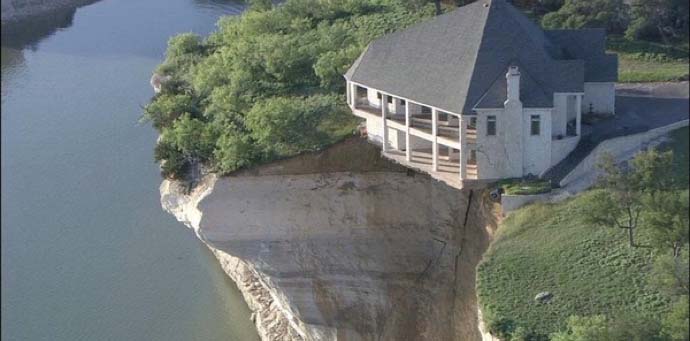
Why residential real estate is a poor investment right now
Have you ever wondered why Australia has no listed residential REITs (real estate investment trusts)? The simple answer is that they would offer poor returns. And, these days, the returns would be worse than ever. But the good news for would-be buyers is that the property price bubble could be about to end.
Residential REITs are Equity REITs that own and manage various forms of residences and rental space in those properties to tenants. In the US, residential REITs include specialists in apartment buildings, student housing, manufactured homes and single-family homes. Some focus on particular geographies and others on specific classes of properties. From Aimco (Apartment & Investment Management Co), which trades on a yield of 3.32% to UMH Properties Inc., on a yield of 4.42%, there are literally dozens of residential REITS listed in the US.
Of course the reason that none exist in Australia is because a positive distribution cannot be extracted from the investment class. Capital prices, along with ongoing maintenance costs that far exceed the rents that can be extracted, are simply too high.
At the beginning of section VII in his 1955 book, The Great Crash 1929, author and economist John Kenneth Galbraith defined a bubble thus: “As noted, at some point in the growth of a boom all aspects of property ownership become irrelevant except for the prospect of an early rise in price. Income from the property, or enjoyment of its use, or even its long run worth is now academic. As in the case of the more repulsive Florida lots, these usufructs may be non-existent or even negative. What is important is that tomorrow or next week market values will rise – as they did yesterday or last week – and a profit can be realised.”
Markus Brunnermaier, an economist and professor at Princeton University, defines bubbles thus: “Bubbles are typically associated with dramatic asset price increases followed by a collapse. Bubbles arise if the price exceeds the asset’s fundamental value.”
With respect to fundamental value, one widely accepted and durable model of asset price determination is Irving Fisher’s from 1930: “The value of any property, or rights to wealth, is its value as a source of income and is found by discounting that expected income.”
Following the stock market crash of 1929, Fisher also developed a theory of economic crises called debt-deflation, which attributed the crises to the bursting of a credit bubble.
According to Fisher, the bursting of the credit bubble unleashes a series of effects that have serious negative impacts on the real economy:
- Debt liquidation and distress selling.
- Contraction of the money supply as bank loans are paid off.
- A fall in the level of asset prices.
- A still greater fall in the net worth of businesses, precipitating bankruptcies.
- A fall in profits.
- A reduction in output, in trade and in employment.
- Pessimism and loss of confidence.
- Hoarding of money.
- A fall in nominal interest rates and a rise in deflation-adjusted interest rates.
With Fisher’s point 1. above in mind, we note today’s The Australian Financial Review, reported “record numbers of Australian households face mortgage stress as large loans and rising interest rates start to bite…”
According to an annual survey of 52,000 households, now in its 15th year, by Digital Financial Analytics (DFA), “debt stress momentum is unprecedented”. More than 767,000 households – or a quarter of all households – are facing financial distress and 32,000 are in ‘severe distress’, defined as unable to meet repayments from current income.
DFA then echoes Irving Fisher, saying: “Stressed households are less likely to spend, which acts as a drag anchor or future economic growth.”
If you think property prices are going to keep rising indefinitely and aren’t vulnerable to a correction, good luck to you. We wish you well in your endeavours.
As an aside, we note that falling property prices will of course immediately solve the housing affordability crisis. More concerning and significantly more serious of course is the impact on the economy which we outline on video here and here.
Ground zero in Brisbane.
http://www.afr.com/real-estate/apartment-builder-cmf-projects-in-administration-20170511-gw291j
Roger, as always an excellent article. I have noticed your article continues with a number of key themes that you have been highlighting for some time now. To plagiarise you, why is this time different? Why is now the definitive start of the slow down when you have been echoing similar sentiments for a number of years? More rudely, why were you wrong before?
We are value investors. We will always be early. Better to be 12-24 months early than 12-24 minutes late.
From my point of view, you really can’t time price movements, my take from Roger’s articles is that the fundamental drivers of property valuation don’t justify the current prices, that doesn’t mean they will correct today or tomorrow, asset prices can stay inflated or overvalued for years, there was a great quote by Keynes “Markets can stay irrational longer than you can stay solvent” or perhaps reworded for greater relevance in this scenario, the market can be irrational longer than your patience threshold can endure.
Thanks for resetting the compass Steven.
Not sure if you’ve seen this one yet Roger:
http://www.abc.net.au/news/2017-05-02/brickx-startup-selling-shares-in-sydney-melbourne-properties/8487790